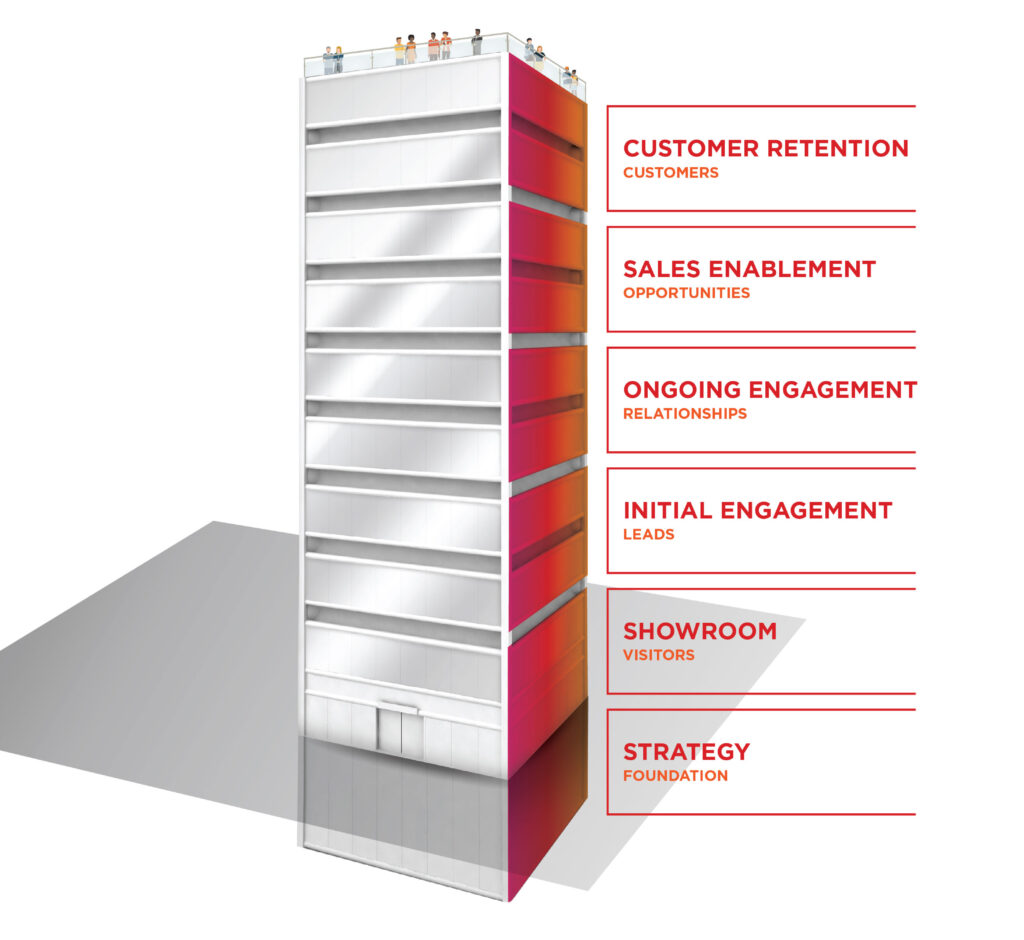Reimagining the Marketing and Sales Funnel
This obsolete idea is limiting your success. Here’s a better system.
Did you know that the “funnel” framework was conceived more than 100 years ago? It gained prominence around the 1960s and it’s still commonly used today. But is a customer journey metaphor that got popular thirty years before AOL started mailing out CDs still the best thing?
You’ll likely agree that a few things have changed since the Mad Men era. B2B buyers have infinite information. They do their own research. They screen cold outreach. Overall, they have complete control over their buying journey. Talking to potential vendors is way down the path. No buyer today is going to let you put them into your funnel. If anything, you must make it through theirs. And if you don’t make it through to their short list, you won’t even know there was an opportunity.
While there have been some attempts to update the funnel framework, most of them have come out as incredibly complicated visualizations. The current best and most popular enhancement is TOFU, MOFU and BOFU—standing for Top of Funnel, Middle of Funnel and Bottom of Funnel. While silly sounding and perhaps a slight improvement, it doesn’t fix the many problems with this model. It’s like putting lipstick on a pig, as they say. (I mean no offense to pigs, but if you have a better analogy let me know.)
Here is why the funnel needs to go into the recycle bin:
It’s marketing-centric, not buyer-centric. The funnel was developed before buyers gained control of the process. The buyer’s journey today is owned by the buyer, not by you as a seller.
It’s linear. Years ago, Gartner and CEB debunked the idea that the buying process is a linear (funnel-like) path of awareness, interest, consideration and conversion. Today’s B2B buyers follow a decidedly non-linear approach.
It’s isolated. In the time it takes a web page to load, buyers can move between “funnels”—yours and all your competitors’. You may think they’re sitting in your funnel, but it’s better to think about them as jumping in and out at will, and that you need to continually attract them back.
It’s overly acquisition-focused. Sometimes the most effective marketing dollars are invested in efforts targeting current customers. In the funnel model, once customers pop out of the bottom, you’re done.
It kicks people out. The low cost of staying in touch today means you don’t have to write people off if they don’t convert. They can still be great referral sources, advocates or future customers. Remember, they may move to another organization, or they may just be on their own non-linear journey.
It misses the feedback between customers and prospects. Your prospects are listening to your customers for reviews, recommendations and experience. This should not only be considered but encouraged.
It ignores the value of strategy and creativity. There’s nothing in the funnel framework about brand messaging, leveraging marketing technologies, or using novel approaches. These will all have a tremendous impact on your results.
It assumes that more in equals more out. In the old days, you could make twice the cold calls and get twice the customers. It’s not that simple anymore.
It implies that gravity is on your side. The worst part of the funnel framework is the idea that customers just fall out of the bottom. It’s harder than ever to keep people engaged and moving forward. There’s no invisible gravitational force working for you!
So the funnel is obsolete. Now what?
To reimagine the funnel, let’s think outside the funnel, if you will. Rather than anchoring on the current framework and looking at how to improve it incrementally, it’s best to consider all its strengths and weaknesses, understand what’s still consistent in terms of human behavior, and identify what’s changed in terms of technology and availability of information.
In developing a better system, we thoroughly analyzed the current funnel model vs. reality. We combined that with our strategic perspective, creative spirit, and our 30 years of experience creating and executing successful B2B marketing programs. Paying homage to our Chicago roots, we developed a new metaphor that’s more like a skyscraper than a funnel. Finally, we tested it and improved it over a period of 8 years, and with dozens of clients, to validate its effectiveness. It has proven to be extremely effective.
The reimagined funnel is the Revenue Tower®.
Unlike the funnel framework, the Revenue Tower isn’t isolated and it doesn’t rely on gravity, as marketers have to work to continually attract, reattract and elevate prospects. It also accounts for the fact that the buyer journey is non-linear as it doesn’t narrow or kick people out. It identifies strategy and messaging as essential elements and helps make sure these are strong. It recognizes the value of content and creativity to attract visitors, MarTech tools to enhance efficiency and effectiveness, data to provide visibility and strategic insights, and even talent marketing to ensure the best and brightest team to deliver on your brand promise.

Each floor of the tower has an overall goal, as well as possible tactics that have been thoughtfully identified and grouped. As resources are always limited, the key is to identify the priority tactics in each section, while ensuring that every floor is covered.
At the very top of the tower is a lovely rooftop deck, where your loyal customers enjoy the special treatment and exclusive benefits that they deserve. They’re the people telling those below to come on up.
The Revenue Tower will help you create an integrated and strategic marketing and sales effort that will drive the biggest revenue and profitability impact possible from your marketing investment. To learn more about this enhanced B2B marketing approach, visit The Funnel Killer.

